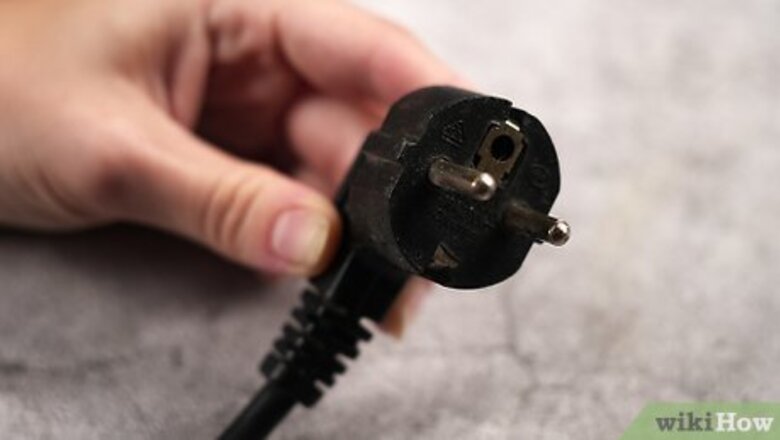
views
Cleaning an Electric Waffle Iron with Non-Removable Plates
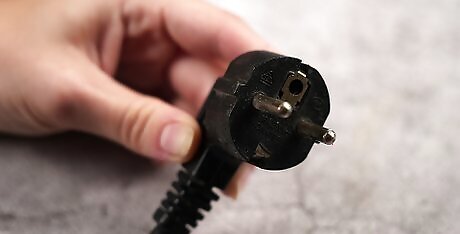
Unplug your waffle iron and allow it to cool. Most modern electric waffle irons come with nonstick plates, and they have to be cleaned without immersing the appliance in water. You definitely don't want to burn yourself trying to clean a piping hot waffle iron. Instead, unplug it before enjoying your waffle. By the time you're finished and ready to clean, it should be cool.
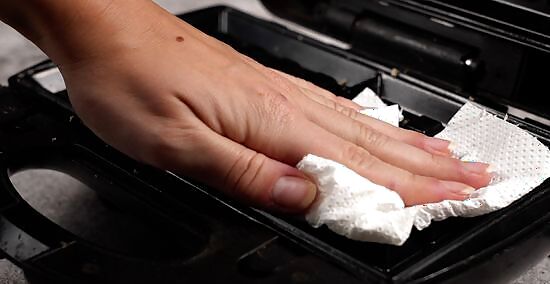
Remove excess oil with dry paper towel. If you have a nonstick waffle iron, you may not have used any oil. If you did, however, there maybe little puddles of grease. You can dab these up with a dry paper towel. It may be helpful to fold the paper towel into a point, so that you can push it between the ridges of the iron.
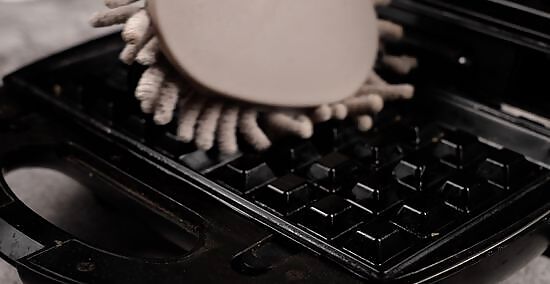
Brush away large crumbs. Often times, there will be bits of dried batter stuck within the ridges, or even dripping over the sides if you filled the iron generously. Do a once over, brushing away those big pieces with a soft-bristled kitchen brush. It's important that the bristles really are soft, because you don't want to risk scratching the nonstick surface.
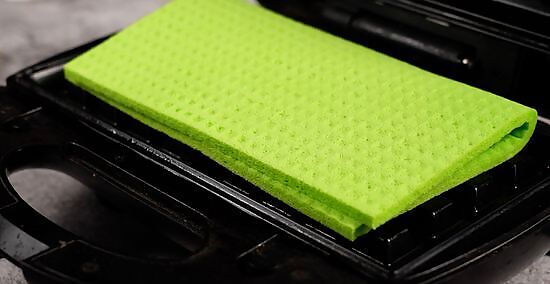
Loosen the hardened bits with a hot cloth. If there is a lot of batter dried to the iron, it can be extremely annoying to loosen and scrape each one, bit by bit. Instead, soften all the batter up first. Grab a dish towel or rag and soak it with hot water from the sink. Ring it out a bit so that it isn't dripping, but still saturated. Place it on the waffle iron, and close it. Let it sit for a few minutes, so that the heat and moisture from the rag loosens up those pesky crumbs.
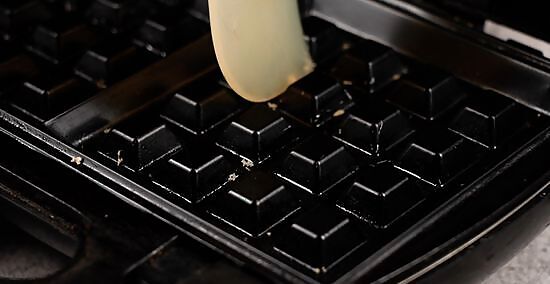
Remove any remaining batter with a rubber spatula. These rubber kitchen utensils might as well have been made for cleaning a waffle iron, because they're ideal. The rubber won't scratch the surface, and it's thin and malleable enough to get in between the rows of the waffle iron. Once the dried batter has been softened by the wet rag, you should be able to use your rubber spatula to scrape the rest of the batter off. You can also use a sponge to gently remove the loosened batter. Make sure you purchase one that is specifically for nonstick surfaces.
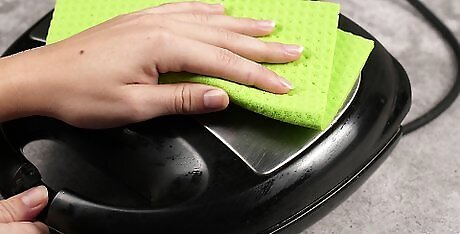
Clean the outside of the iron with a damp cloth. Make sure that your cloth is damp, not wet. It's important that you don't accidentally get water into the electrical parts of the iron, which could cause you to get shocked next time you turn it on, or break the iron altogether. Clean everything that has batter on it, or looks dirty.
Cleaning a Waffle Iron with Removable Plates
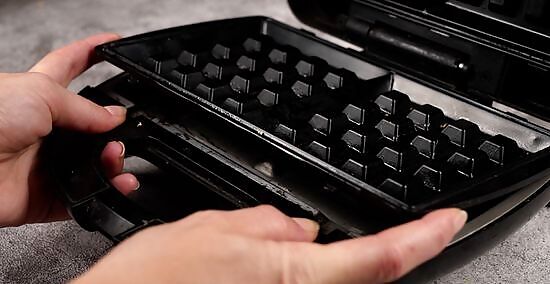
Allow your iron to cool and remove the plates. You can unplug it when you're finished making your waffles, and it can cool while you eat. Remove the plates from the waffle iron according to the manufacturer’s instructions, if you still have them. Waffle iron grid plates usually snap out easily.
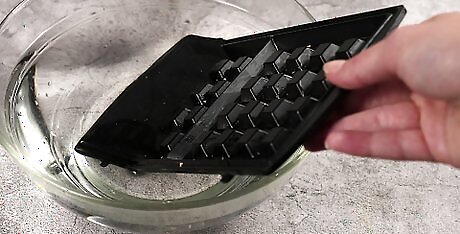
Immerse the plates in warm water. It's probably easiest to do this in your sink, but you can also use a shallow dish of warm water. Don't add any soap to the water. Nonstick plates should never be cleaned with soap because it can cause the nonstick surface to deteriorate.
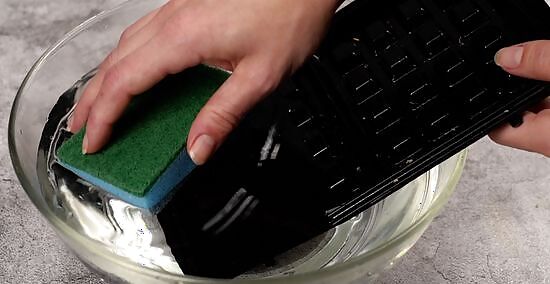
Gently clean the plates with a sponge or brush. Again, it's important to be cognizant of the nonstick surface and use soft cleaning supplies. Use a sponge that is made specifically for nonstick surfaces, or a kitchen brush with soft bristles. You don't want to scratch up the plates while cleaning them.
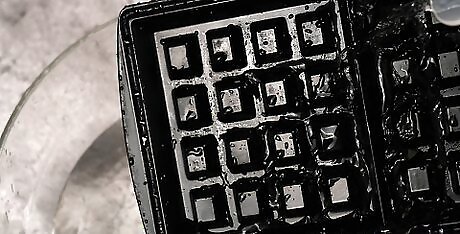
Rinse the waffle grid plates in warm water. Allow the water to remove any remaining crumbs. It's great to turn the plates vertical so that the water can run through the ridges, rinsing spots you may have missed with your sponge, brush, or rag. The dishwasher can be damaging to the nonstick surface of the waffle iron, so this method is the next best thing. Check your manufacturer's instructions to see if your plates can go in the dishwasher or not.
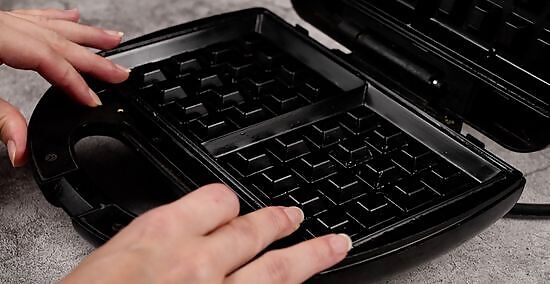
Allow the plates to dry and snap them in. Set them on a drying rack or on a dish towel on your counter. If you're in a hurry, you can certainly use a dry cloth or paper towel to dry them more quickly. You want to make sure your plates are completely dry before snapping them back into your iron.
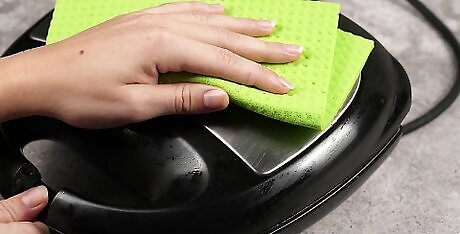
Clean the outside of the iron. Use a damp cloth to get the exterior as clean as you got the plates. Be careful to avoid getting water into the electrical parts of the iron, which could damage the iron or result in a shock next time you plug it in.




















Comments
0 comment